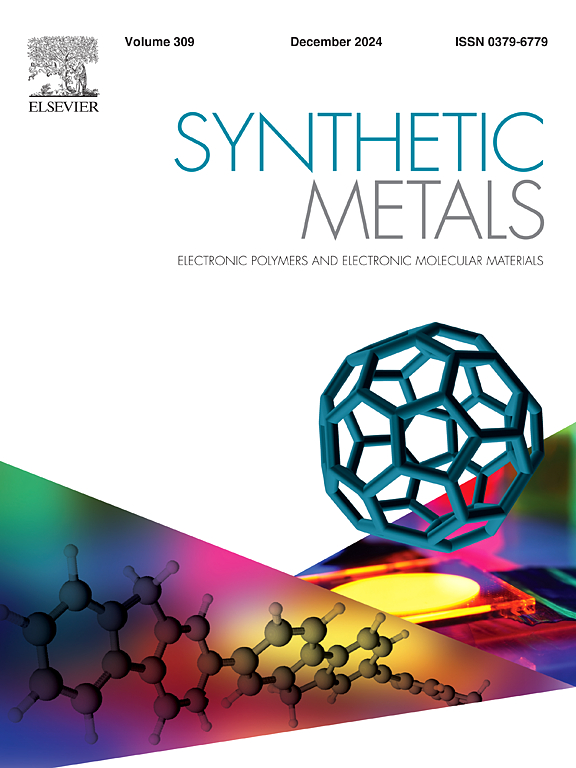Phenylenediamine and 4,4’-methylenedianiline functionalized rGO as high-performance materials for improving pseudocapacitance performance and cyclic stability of conductive polymer
IF 4.6
3区 材料科学
Q2 MATERIALS SCIENCE, MULTIDISCIPLINARY
引用次数: 0
Abstract
Here, improved Hummer’s approach was utilized for the formation of graphene oxide (GO) from graphite. Then, using 4,4’-methylenedianiline (MDA) was utilized as a reducing agent for the fabrication of reduced graphene oxide (rGO) hydrogel from the as-prepared GO. In the next step, using the electro-polymerization technique, p-Phenylenediamine (pPD), playing the role of spacer, was grafted on the prepared rGO, conducted through interfacial polymerization in HCl (rGO-PpPD-HCl) and mixing polymerization in CHCl3 (rGO-PpPD-CHCl3). Finally, Poly ortho aminophenol (POAP) as a p-type conductive polymer was synthesized on the channels of the as-fabricated nanocompsites. The prepared nanocomposite architecture possessed significant surface area and great pore volume, by which a synergistic effect can be obtained, leading to a superior overall performance. It was found that the specific capacitance of the fabricated spherical composite electrode with optimum results was 985 F/g at 1.0 A/g current density, and the retention rate of the initial capacity was 90 % after 3000 cycles in acidic solution, demonstrating its excellent cycle stability.
苯二胺和4,4′-亚甲基苯胺功能化氧化石墨烯作为提高导电聚合物赝电容性能和循环稳定性的高性能材料
在这里,改进的Hummer方法被用于从石墨生成氧化石墨烯(GO)。然后,以4,4 ' -亚甲基二苯胺(MDA)为还原剂,将制备的氧化石墨烯制备还原氧化石墨烯(rGO)水凝胶。下一步,利用电聚合技术,将对苯二胺(pPD)作为间隔剂接枝到制备的还原氧化石墨烯上,在HCl中进行界面聚合(rGO- pppd -HCl),在CHCl3中进行混合聚合(rGO- pppd -CHCl3)。最后,在纳米复合材料的通道上合成了聚邻氨基酚(POAP)作为p型导电聚合物。所制备的纳米复合材料结构具有显著的比表面积和较大的孔隙体积,从而可以获得协同效应,从而获得优越的综合性能。结果表明,在1.0 A/g电流密度下,制备的球形复合电极的比电容为985 F/g,在酸性溶液中循环3000次后,初始容量保持率为90 %,具有良好的循环稳定性。
本文章由计算机程序翻译,如有差异,请以英文原文为准。
求助全文
约1分钟内获得全文
求助全文
来源期刊

Synthetic Metals
工程技术-材料科学:综合
CiteScore
8.30
自引率
4.50%
发文量
189
审稿时长
33 days
期刊介绍:
This journal is an international medium for the rapid publication of original research papers, short communications and subject reviews dealing with research on and applications of electronic polymers and electronic molecular materials including novel carbon architectures. These functional materials have the properties of metals, semiconductors or magnets and are distinguishable from elemental and alloy/binary metals, semiconductors and magnets.
 求助内容:
求助内容: 应助结果提醒方式:
应助结果提醒方式:


